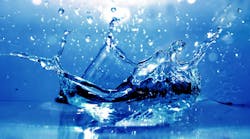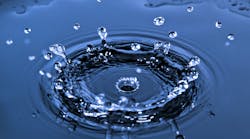By Dawn Kristof Champney, WWEMA President
Looking Beyond the Stimulus: Life After ARRA for Water Infrastructure was the theme of WWEMA's 101st Annual Meeting held mid-November in Florida. As indicated by its theme, the topic most on the minds of senior executives in attendance, comprising the industry's leading producers and suppliers of water and wastewater products and technologies, was the economy.
Rep. Earl Blumenauer (D-OR), Congress' chief spokesperson for Livable Communities, spoke about the deteriorating condition of the nation's water infrastructure, with 72,000 miles of mains and sewer pipes installed over 80 years ago, and leaking distribution systems accounting for 9,000 Olympic-size swimming pools' worth of water being lost daily.
"Communities don't have the scale of revenue base to keep pace with today's needs," he remarked, thus explaining his reason for introducing legislation to create a $10 billion clean water trust fund with proceeds coming from taxes on corporate income, water-based and flushable products, and pharmaceuticals. WWEMA members weren't too enthralled with the idea of raising taxes in lieu of raising rates that reflect the actual cost of providing water and wastewater services.
Presenting a more optimistic view of the industry's outlook was Tom Decker of CH2M Hill, who reported that the water and wastewater sector experienced 4% growth in 2008 and was on track to achieve 3% growth in 2009.
"Even though it's far from the 13% growth rate experienced in 2005, it is still growth, especially when you compare it to other industry sectors that are facing double-digit negative growth rates this year," Decker noted.
As to the split between water and wastewater spending as a percent of market share, he stated that wastewater still outpaces water in the 55-60% range vs. 40-45%, respectively, though the top 200 engineering firms reported they had experienced 17% growth in water revenue vs. 4% in wastewater revenue over the past year.
"The delta between the two is significant," Decker observed, "especially considering that engineering services is a leading indicator of product sales in the future."
Given the significant infrastructure needs outstanding and backlogs holding steady, he doesn't anticipate any contraction in the market in 2010.
Steve Maxwell of Strategic TechKNOWLEDGEy offered similar predictions about the market outlook, anticipating steady growth in the range of 5-7%. Due to continuing - and probably somewhat accelerating growth - into the long-term, well-known companies like Monsanto and John Deere are interested in expanding their platform and holdings in the broad water sector, he noted. While investment activity in this industry has subsided considerably of late due to general economic conditions, he said that there is still a great deal of interest in this sector, adding the multiples being paid for water-related businesses have been adjusted downward to a more realistic 5-6% range.
By far the liveliest discussion on this year's Annual Meeting program was that pertaining to the Buy American provision of the American Recovery and Reinvestment Act (ARRA) and the negative impact it has had on the industry by disrupting supply chains, restricting competition, and delaying the implementation of job-creating shovel ready projects.
Chuck Job, Chief of the Infrastructure Branch in EPA's Office of Ground Water and Drinking Water, reported that as of November 9, only $1.3 billion of the $6 billion in ARRA funds for the drinking water and clean water State Revolving Fund programs had been committed, which is largely due to delays, concerns and confusion related to the Buy American rules.
"While waivers are available, only 37 requests have been received to date reflecting the reluctance of communities to pursue that course of action," he observed, citing the example of one state that went so far as to tell its grant recipients "If you can't find an American supplier, find another project!"
Of the 1,512 clean water projects and 1,425 drinking water projects expected to receive stimulus funds, only 360 clean water and 258 drinking water projects had signed contracts as of mid-November. When asked what types of projects are likely to be funded, he replied that 44% of the $4 billion available for clean water projects is expected to go toward secondary and advanced treatment projects, while 45% of the $2 billion available for drinking water projects will likely be spent on transmission and distribution systems.
The adoption of the Buy American provision as it applies to municipal projects also threatens to embolden trade-protectionist policies of our international trading partners, as explained by Jay Myers, President and CEO of Canadian Manufacturers & Exporters, Canada's largest industry and trade association.
"How do we create jobs by restricting trade," he asked. "You create business opportunities by keeping markets open and being competitive, especially by an integrated North American market," Myers proclaimed.
With Canada expecting to invest up to $40 billion over the next five years in water and wastewater projects, of which 60% will likely be spent on U.S. imports, there is much at stake if our two governments are unable to work out some compromise in the application of Buy American as it pertains to Canada, he forewarned.
A fluid situation, indeed! WW
About the author:Dawn Kristof Champney is president of the Water and Wastewater Equipment Manufacturers Association, a 101-year old national trade organization which represents the interests of companies that manufacture and supply technologies used in municipal and industrial water supply and wastewater treatment applications.


